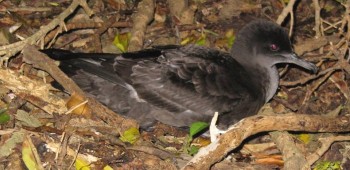Rachel Buxton (Department of Fish, Wildlife and Conservation Biology, Colorado State University, Fort Collins, USA) and colleagues have published a review paper in the journal Biodiversity and Conservation on deciding whether active or passive management should follow alien eradications on seabird islands.
The paper’s abstract follows:
“Following the removal of an introduced species, island restoration can follow two general approaches: passive, where no further intervention occurs and the island is assumed to recover naturally, and; active, where recovery of key taxa (e.g. seabirds) is enhanced by manipulating movement and demography. Steps for deciding between these techniques are: (1) outlining an explicit restoration goal; (2) building a conceptual model of the system; (3) identifying the most effective management approach; and (4) implementing and monitoring outcomes.
After decades of island restoration initiatives, retrospective analysis of species' responses to active and passive management approaches is now feasible.
We summarize the advantages of incorporating these analyses of past restoration results as an initial step in the decision-making process. We illustrate this process using lessons learned from the restoration of seabird-driven island ecosystems after introduced vertebrate eradication in New Zealand. Throughout seven decades of successful vertebrate eradication projects, the goals of island restoration have shifted from passive to active enhancement of island communities, which are heavily dependent on burrow-nesting petrel population recovery. Using a comparative analysis of petrel response to past predator eradications we built a conceptual model of petrel recovery dynamics and defined key site and species characteristics for use in a stepwise decision tree to select between active or passive seabird population management.
Active restoration techniques should be implemented when seabird populations are absent or declining; and on islands with no nearby source colony, small remnant colonies, highly altered habitat with shallow soil and slopes, and with competitive species pairs. As we continue to restore complex island communities, decision-making tools using a logical, step-wise framework informed by previous restoration successes and failures can aid in increasing understanding of ecosystem response.

Sooty Shearwater, photograph by the West Coast Penguin Trust
With thanks to Barry Baker.
Reference:
Buxton, R.T., Jones, C.J., Lyver, P.O'B., Towns, D.R. & Borrelle, S.B. 2016. Deciding when to lend a helping hand: a decision-making framework for seabird island restoration. Biodiversity and Conservation 25: 467-484.
John Cooper, ACAP Information Officer, 18 March 2016

 English
English  Français
Français  Español
Español